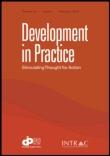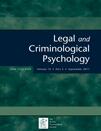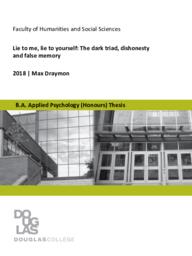Humanities and Social Sciences
Related Works
Content type
Digital Document
Abstract
Au cours des dix dernières années, plusieurs rapports et débats publics ont exposé clairement la relation entre la laïcité et l’égalité entre les femmes et les hommes. Dans de nombreux cas, l’égalité hommes-femmes ne semble être envisagée que dans un contexte laïque. Les récents débats publics sur la religion et la diversité au Québec illustrent bien la manière dont laïcité et égalité des femmes sont mises en parallèle. Dans cet article, nous examinons comment le principe d’égalité hommes-femmes ressort de certains des mémoires présentés devant la Commission Bouchard-Taylor, du rapport des commissaires, ainsi que des discussions publiques ultérieures qui ont été menées sur le sujet. Nous explorons ensuite les modalités selon lesquelles l’égalité hommes-femmes a émergé comme thème central des mémoires présentés à l’Assemblée nationale à l’occasion du débat sur la Charte des valeurs québécoises. Notre analyse révèle que ces mémoires présentent les femmes, croyantes ou non, pratiquantes ou non (religious or non-religious) comme des êtres en mal de protection : c’est en effet le cas pour les femmes qui le sont, si l’on part du principe qu’elles n’ont aucune capacité à agir par soi-même (agency); c’est également celui des femmes qui ne le sont pas dans l’optique où elles ne devraient pas être exposées aux dogmes religieux. Dans notre perspective, ces deux postures s’inscrivent dans la lignée d’une attitude patriarcale qui nie la capacité des femmes à agir selon leur propre volonté. En outre, nous remettons en cause l’idée selon laquelle l’égalité des femmes relève de la laïcité, elle-même impliquée dans le patriarcat et emprisonnée dans la question de l’inégalité des femmes.
ENGLISH ABSTRACT
Over the past decade, several public reports and discussions have exposed the relationship between secularism and equality between women and men. In many instances, gender equality seems to be considered only in a secular context. Recent public debates on religion and diversity in Quebec illustrate how secularism and equality for women are paralleled. In this article we examine how the notion of gender equality is manifested in some of the briefs submitted before the Bouchard- Taylor Commission, in the report of the commissioners, and in subsequent public discussions conducted on the subject. We then explore the ways in which gender equality has emerged as the central theme of the briefs submitted to the National Assembly of Quebec on the occasion of the debate on the Quebec Charter of Values. Our analysis reveals that both religious and non-religious women are imagined to be in need of protection: religious women because they are assumed to have no agency and non-religious women because they should not be exposed to religious dogma. Both positions, we argue represent the continuation of a patriarchal approach that refutes a woman's ability to act of her own volition. Further, we challenge the idea that gender equality is the property and domain of laïcité, which is itself implicated in patriarchy and invested in the inequality of women. [ABSTRACT FROM AUTHOR]
Origin Information
Content type
Digital Document
Abstract
Nancy Fraser’s propositions regarding the nature of ‘boundary’ work carried out by experts within organizations suggests that individuals who work within bureaucratic structures are so constrained by the institutional context that they become detached, depoliticizing arbitrators of politicized claims. The purpose of the research reported in this article is to examine the assertion that workers in boundary roles necessarily engage only in work that depoliticizes the claims of oppositional social groups. By exploring the work of anti-harassment practi- tioners at Canadian universities, we uncover moments of both constraint and liberation in the practitioners’ work roles. Attending to the complexities of boundary role work illustrates that struggles over the definition of needs and claims made by marginalized social groups are not closed, nor are boundary workers completely co-opted by bureaucratic institutional prerogatives. Although variously constrained, interviews with practitioners reveal that their work can support counter-hegemonic challenges to the status quo. [ABSTRACT FROM AUTHOR]
Origin Information
Content type
Digital Document
Abstract
This practical note demonstrates the role that haricot beans play in assisting women to become food and nutrition secure, to generate income, and to have sustainable livelihoods that are resilient to shocks. Based on qualitative research among female and male beneficiaries of a pulse innovation project implemented in southern Ethiopia, the note provides a summary of the critical voices of farmers, and the role that haricot beans play in empowering women. It also outlines some of the challenges that the project faced in achieving its empowerment objectives. [ABSTRACT FROM AUTHOR]
Origin Information
Content type
Digital Document
Abstract
(Purpose). Evaluating truthfulness is an integral part of any forensic assessment. Unfortunately, the motives underlying the use of deceptive strategies by offenders and how these may be mediated by personality are not well established, particularly in adolescent samples. Accordingly, the aim of the present study was to identify different deception‐related motivations in a sample of juvenile offenders, with special emphasis placed on the relationship between these motivations and psychopathic traits.
(Methods.) Archived file and videotaped information for 60 Canadian federal juvenile offenders were reviewed in order to identify real‐life (spontaneous) patterns of deceptive motivations.
(Results.) It was found that there were significant differences between the low, medium, and high groups across psychopathic traits for the motivations of (1) lies to obtain a reward; (2) to heighten self‐presentation; and (3) for duping delight.
(Conclusions.) Not only were juvenile offenders found to lie for a variety of reasons, but also psychopathy was found to mediate the specific motivational patterns leading to offender perpetrated deception. The relevance of these findings to the assessment of truthfulness in offender populations is discussed.
Origin Information
Content type
Digital Document
Abstract
The year 2010 constituted a favourable opportunity for the greater descriptive representation of women in the UK Parliament. The parties were publicly competing over the issue; Parliament had its own Committee looking at it; and there were plenty of vacancies for candidates in each of the parties’ held seats, as many more MPs than usual stood down. The outcome was disappointing. There was an overall increase in the number of women MPs – up from 128 to 142 – but this was only a 2.5 per cent increase on 2005. Inter-party differences remain. The Liberal Democrats witnessed a decline in the number and percentage of their women MPs and candidates; the Tories saw a doubling of their number, with women now constituting 16 per cent of their parliamentary party; and Labour has both the largest number and percentage of women MPs. These patterns are best explained by the parties’ different attitudes towards equality guarantees – measures that, all other things being equal, return women MPs to Parliament. In other words, Labour's All Women Shortlists once again delivered. The other parties’ efforts were simply less efficient at translating women candidates into MPs. Looking to the future, the picture is far from rosy. The Coalition's plans for political reform will likely increase competition for selection at the next general election to women's detriment, and the impact of the Independent Parliamentary Standards Authority raises the possibility that their supply might decrease too.
Origin Information
Content type
Digital Document
Abstract
The ‘death’ of German Idealism has been decried innumerable times since its revolutionary inception, whether it be by the 19th-century critique of Western metaphysics, phenomenology, contemporary French philosophy, or analytic philosophy. Yet in the face of two hundred years of sustained, extremely rigorous attempts to leave behind its legacy, German Idealism has resisted its philosophical death sentence. For this exact reason it is timely ask: What remains of German Idealism? In what ways does its fundamental concepts and texts still speak to us? Drawing together new and established voices from scholars in Kant, Fichte, Hegel, and Schelling, this volume offers a fresh look on this time-honoured tradition. It uses myriad of recently developed conceptual tools to present new and challenging theories of its now canonical figures. --From publisher description.
Origin Information
Content type
Digital Document
Abstract
When legal challenges to research confidentiality arise, researchers are expected to resist while the institutions that approve their research provide legal support to enable that resistance. Although researchers have done their part, university administrators have been much less consistent doing theirs. Canada’s federal policy now affirms university administrations “must” provide independent legal representation and “encourages” them to develop policies that articulate how they will do so. A national survey of Research Ethics Board (REB) Chairs and administrators found only one such policy, which turned our attention to factors that impeded creation of others like it. Administrative inertia, a lack of clear lines of responsibility, and resource issues top the list of justifications respondents offered. Implications for researchers, REBs, and university administrators are discussed.
Origin Information
Content type
Digital Document
Abstract
Presented at the <a href="https://cas-sca.ca/en/conferences/">Canadian Anthropological Society/La Societe,</a/> Santiago de Cuba, Cuba (May, 2018).
The potlatch is a multifaceted institution of Northwest Coast lifeways. Angelbeck, presents how the weight of interpretations and discussions about this renowned ceremony often can favour those of the lavish gift-giving demonstrations of ‘conspicuous consumption’, or warfare through gifting. Many have emphasized these as “interest-bearing investments” to produce greater future returns. Such interpretations concentrate on the role of self-interest. He highlights, how such accounts are often in contrast to how Northwest Coast peoples speak of potlatches, whereby these are considered positive ceremonies of celebration, public accounting and witnessing, and community building. The narrow and limited historical context for many initial evaluations of the potlatch as affected by colonial influences, including fur trade wealth, mercantilism, and capitalism will be highlighted. The intent is to allow us to better convey and contextualize potlatch dynamics and alliances between groups both now, as well as, in the past.
Origin Information
Content type
Digital Document
Abstract
Presentation embargoed pending a permission.
Conference presentation delivered at the <a href="https://www.ecpg.eu/">European Conference for Politics and Gender / ECPG</a>, (June, 2017), in Lausanne, Switzerland.
The extant literature on political representation demonstrates white men dominate political legislatures (Murray, 2014), whilst women and ethnic minorities are under-represented relative to their proportion of the population (Hughes, 2009). This pattern holds true for both the UK and Canada, although the UK House of Commons has moved closer to gender balance than Canada’s, while Canada’s House of Commons has moved closer to mirroring the country’s ethnic composition than has the UK. This paper longitudinally explores these representational differences. The research is underpinned by an intersectional analysis exploring the multiple ways in which gender and ethnicity interact at both the party level and in the national media. We argue the specific construction of ‘problematic’ political identities, influenced by the interaction between racialized and gendered stereotypes, makes it especially hard for ethnic minority politicians to become elected. Although the under-representation of ethnic minority women in the UK and Canada has attracted scholarly analysis, less attention has been paid to the ways in which gender and ethnicity interact to affect the representations of male and female ethnic minority politicians. Accordingly, this paper provides a multi-year comparative overview of ethnic minority descriptive representation in the UK and Canada and analysis of party responses to address ethnic minority under-representation.
Origin Information
Content type
Digital Document
Abstract
The Dark Triad Traits (DTT: consisting of Psychopathy, Machiavellianism, and Narcissism) are clearly linked to deceptive and manipulative behaviour, yet little is known about whether people with high levels of DTTs deceive themselves in order to convince others. This online study investigated whether the DTTs predicted false memory levels, assessed by the DRM paradigm (Deese, 1959: Deese & McDermott, 1995), which was modified to include three neutral word lists and three word lists constructed around DTT-related lures (Power, Control, and Status). The sample (n=161) consisted of 136 females and 25 males from the undergraduate research pool and through social networks. Among the three DTTs, psychopathy was most closely predictive of self-reported dishonesty. However, results showed that psychopathy and narcissism significantly predicted lower rates of adopting false memories for neutral lures, whereas Machiavellianism was somewhat predictive of adopting higher false memory levels, particularly for the DTT lure (control). These findings indicate that among the DTTs, psychopathy and narcissism are associated with a lower likelihood of self-deception, while Machiavellianism may increase the probability of self-deception.
Origin Information







